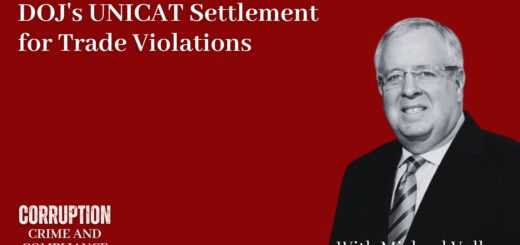Ensuring Compliance Success
 For those companies dedicated to compliance, the first and most critical step is a commitment to empower its compliance office. A company must assign adequate personnel and allocate adequate resources to fulfill its mission. An effective compliance officer must be regarded as equal to, or even senior to, the company’s Chief Financial Officer or General Counsel.
For those companies dedicated to compliance, the first and most critical step is a commitment to empower its compliance office. A company must assign adequate personnel and allocate adequate resources to fulfill its mission. An effective compliance officer must be regarded as equal to, or even senior to, the company’s Chief Financial Officer or General Counsel.
Gone are the days when compliance offices are a backwater for auditors or management specialists with no authority to address compliance issues. The challenge today is to empower compliance functions by integrating the required elements for success: legal, auditing, human resources and investigative resources.
The structural keys to ensure success are:
1. Designating a Chief Compliance Officer and assigning them responsibilities at a senior executive level commensurate with the Chief Financial Officer and General Counsel.
2. Creating a Compliance Committee separate from the Audit Committee on the Board of Directors to which the Chief Compliance Officer may directly report if necessary. While approximately one quarter of all companies have created Compliance Committees, it is the new trend and in most cases is an important step for companies to underscore compliance.
3. Preserving attorney-client privilege within the compliance office and functions. In the internal turf battles between attorneys and compliance offices, the general counsel frequently wins by asserting that he or she has the attorney-client privilege which can protect any communications from disclosure. A compliance office can establish the attorney-client privilege by staffing the office with attorneys, ensuring that communications related to compliance concern legal advice related to compliance matters. This is not hard to do; after all, attorneys, accountants and other staff work together in many contexts and regularly work to preserve the privilege. This same strategy can be applied in the compliance context so long as lawyers are strategically used in the conduct of compliance operations.
4. Creating a new office for corporate compliance consisting of key officers and employees with cross-cutting access to information and responsibilities across the legal, accounting, human resources and investigative fields. With innovative ideas, and staff and support from top management, the new compliance office should be elevated within the organization and empowered with real authority















